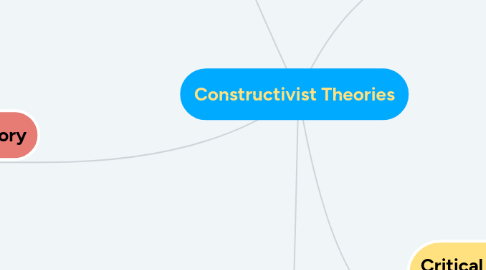
1. Schema Theory
1.1. "A reader's schema, or organized knowledge of the world, provides much of the basis for comprehending, learning, and remembering the ideas in stories and texts" (Anderson, 1983, p. 243).
1.1.1. Schema provides scaffolds for integrating textual information in one's mind.
1.1.1.1. Schema functions as a type of graphic organizer that can help a reader connect gaps between what (s)he knows and what needs to be learned before attempting a new task.
1.2. When a reader comprehends a message, he brings his own schema that aligns with the objects/events described in the passage.
1.2.1. When reading, there is more than one interpretation of text (depending on each individual reader's schema/culture).
1.2.1.1. When considering schema theory, reading is analysis of many things a varying levels. As you read, each person's understanding/interpretation of that a piece of text means depends on their interpretation/analysis of the actual printed words and their own thought processes. (which is what makes reading comprehension so individualized)/
1.3. Critical for comprehension is the idea that schema helps bridge relationships between elements of reading.
1.3.1. "Comprehension is a matter of activating or constructing a schema that provides a coherent explanation of objects and events mentioned in a discourse" (Anderson, 1983, p. 247).
1.4. 6 functions of Schemata proposed (Anderson, 1983, p. 247-248)
1.4.1. 1. Schema provides scaffolding (a spot) for specific text info.
1.4.2. 2. Schema helps determine the important parts of text.
1.4.3. 3. Schema helps the reader draw inferences.
1.4.4. 4. Schema helps the reader recall important information.
1.4.5. 5. Schema helps the reader prioritize information and draw summaries.
1.4.6. 6. Schema helps the reader 'fill in' missing information.
1.5. According to schema theory, building prior knowledge can help improve comprehension.
2. Psycholinguistic Theory & Whole Language Theory
2.1. Psycholinguistic Theory
2.1.1. Reading is mostly a language process- readers rely on language cueing systems to help them quickly read text.
2.1.1.1. Types of Cueing Systems
2.1.1.1.1. 1. Syntactic cues- grammar/syntax of the language that allow the reader to predict the next word (in text).
2.1.1.1.2. 2. Semantic cues- word/sentence meaning that allow the prediction of next word (in text).
2.1.1.1.3. 3. Graphophonic cues- physical visual patterns of letters/words and their sounds (also to help predict next word).
2.1.1.2. Knowledge of language combined with world experiences and world knowledge drives thought processes while reading.
2.1.2. Predictability of text critical. If text aligns with the reader's expectations (of what is to come) reading will be fluid. If reader's expectations do not align, reading will be challenging (and slow).
2.2. Whole Language
2.2.1. Speaking, listening, reading and writing are connected processes. Focus is on instructional strategies (no commercially prepared 'reading series').
2.2.2. Focuses on high quality, rich, authentic literacy environment and experiences.
3. Metacognitive Theory
3.1. Thinking about your own thinking.
3.1.1. "Poor readers have far less metacognitive awareness than their higher achieving peers and that young readers have less such awareness than older readers" (Tracey & Morrow, 2017, p. 70)
